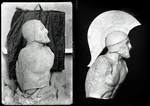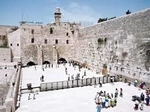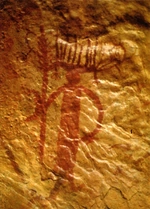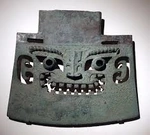The Two Rivers Shores Here We Passed Over, And Time To Take A Break, Before We Leave The Indus Lands
This is section we will try to commulate all our creeks to single river flow of outcomes, prehistoric cultures, to kingdoms, and assuming, was our predictions, based on incomlete and may be speculative scoring method succeed?
| Prehistoric / Regional Culture | Timeframe (approx.) | Fate in History | Successor Kingdom(s) or Region | Nature of Transformation |
|---|---|---|---|---|
| Mehrgarh (Kachi Plain, Baluchistan) | 7000–3300 BCE | Transformed | → Nausharo–Mehrgarh Kingdom (Baluchistan Highlands) | Became the metallurgical and agricultural base of early Indus; continuity of farming, copper use, and bead crafts. |
| Kili Gul Mohammad / Mundigak (Afghan Border) | 6000–3500 BCE | Absorbed, then faded | → Western Frontier of Nausharo polity | Early trade with Iran & Central Asia faded after 2500 BCE; population merged into Indus highland fringe. |
| Kot Diji / Ravi Phase (Upper Indus) | 4000–2600 BCE | Evolved | → Harappa Kingdom (Upper Indus Basin) | Developed standardized bricks, fort walls, script marks → direct precursor of Harappa’s urban bureaucracy. |
| Amri–Nal Horizon (Sindh–Baloch Border) | 3500–2600 BCE | Evolved | → Amri Kingdom & Mohenjo-Daro Zone | Proto-urban pottery and fort layouts → became southern administrative network under later Indus federation. |
| Sothi–Siswal / Early Kalibangan (Ghaggar–Hakra) | 3800–2600 BCE | Transformed | → Saraswati / Ghaggar–Hakra Kingdom | Villages coalesced into ritual-hydraulic towns; continuity in fire-altars and field layout. |
| Anarta & Sorath Traditions (Gujarat–Kutch–Saurashtra) | 3700–1900 BCE | Merged and Survived | → Dholavira, Lothal, Surkotada Kingdoms | Local coastal and desert cultures merged into the maritime confederation; maintained autonomy into Late Harappan. |
| Ahar–Banas Culture (Rajasthan) | 3000–1500 BCE | Partially Survived | → Traded with Harappa; later → absorbed by Vedic Janapadas | Supplied copper northward; persisted as post-Harappan rural culture. |
| Northern Frontier / Burzahom–Gufkral Complex (Kashmir–Himalaya) | 4000–1800 BCE | Survived outside Indus core | → Linked to Central Asian steppe; later Indo-Iranian contacts | Never urbanized; continued Neolithic way into Iron Age. |
| Deccan Neolithic–Chalcolithic (Inamgaon, Daimabad) | 2500–1500 BCE | Independent development | → Deccan Bronze traditions; later Satavahana core region | Influenced by Indus metallurgy but not politically part of the federation. |
| Indus Kingdom | Root Culture(s) | Degree of Continuity | Result |
|---|---|---|---|
| Harappa | Kot Diji, Ravi Phase | Direct, full | Urban bureaucratic heartland |
| Mohenjo-Daro | Amri–Nal Horizon | Strong | Major southern capital; maritime trade core |
| Saraswati / Ghaggar–Hakra | Sothi–Siswal / Early Kalibangan | Direct | Eastern ritual-hydraulic monarchy |
| Dholavira | Anarta + Sorath | Full regional evolution | Desert-island hydraulic monarchy |
| Lothal | Anarta + Sorath | Full | Port-mercantile kingdom; maritime federation |
| Surkotada | Sorath extension | Direct | Frontier fort and military kingdom |
| Chanhu-Daro | Amri–Nal | Strong | Industrial guild city-state |
| Amri | Amri–Nal Early | Continuity | Proto-urban fort kingdom |
| Nausharo–Mehrgarh | Mehrgarh Highland Culture | Direct | Highland resource kingdom; earliest roots of Indus society |
| Culture | Reason for disappearance | Outcome |
|---|---|---|
| Kili Gul Mohammad / Mundigak | Trade routes shifted east; isolation after 2600 BCE | Abandoned, absorbed by Indus highlands |
| Amri–Nal (as independent) | Integrated into wider Indus trade system | Lost independence, traditions persisted in pottery |
| Sothi–Siswal (as separate) | Merged under Saraswati urbanism | Absorbed into eastern Indus ritual states |
| Culture | Later manifestation |
|---|---|
| Ahar–Banas | Copper trade continued into Early Vedic Rajasthan cultures |
| Anarta & Sorath | Persisted in Dholavira–Lothal crafts into Late Harappan (down to ~1700 BCE) |
| Deccan Chalcolithic | Continued independently; linked to Daimabad bronze tradition (~1500 BCE) |
| Burzahom–Gufkral | Survived as pastoral-agricultural upland cultures until Iron Age; possible Indo-Aryan interface |
And now it is time to check our prediction scores from the beginning:
Totally vanished cultures we found here (based on facts), indexed within our predictions as:
- [0](Kachi Plain, Bolan Pass, Quetta, and Afghan border regions), we scored this culture with +5
- [1](Indus Upper Basin (Punjab Region – Ravi, Beas, Sutlej Rivers)), we scored it with 2
- [2](Sindh and the Lower Indus Basin), our evaluation for success in consecutive development +6
- [3](Ghaggar–Hakra (Sarasvati) Region — Eastern Indus Fringe), we scored these tribes with 4
- [4](Gujarat, Kutch, and Saurashtra Peninsula (Dholavira, Lothal, Rangpur, Surkotada, Kuntasi, Loteshwar, Nagwada, Bagasra)), in our prediction rated with 4.5
- [5](Rajasthan and the Ahar–Banas Cultural Zone (Ahar, Gilund, Balathal, Ojiyana, Bagor (earlier Neolithic))), we rated the culture with 6
- [6](Northern Frontier and Himalayan Foothills (Burzahom, Gufkral (Kashmir), Mandi (Himachal), Sarai Khola (Potwar Plateau, N. Pakistan), Loebanr, Ghaligai (Swat Valley))), we rated their potential as 1.5
- [7](Central Indian Plateau and Deccan Neolithic (Chirand (Bihar, eastern fringe), Inamgaon, Nevasa, Daimabad, Tekwada, Kayatha, Navdatoli (Madhya Pradesh and Maharashtra regions))), our estimation scored 6
Below we will present the table with reality data and our prediction. If our prediction rate is lower than 3, the tribe should not have survived; otherwise, we set a green V as a partially adaptable score. Conversely, if a tribe vanished but we scored a high value, it is considered a misprediction.
| index | rate | period | tribe | fate | success/unsuccess |
|---|---|---|---|---|---|
| [0] | 5 | 7000–3300 BCE | Mehrgarh (Kachi Plain) | Survived and transformed | ✅ |
| [0] | 5 | 3300–2600 BCE | Nausharo | Fully survived (absorbed) | ✅ |
| [0] | 5 | 6000–3500 BCE | Kili Gul Mohammad (near Quetta) | Vanished / absorbed | ❌ |
| [0] | 5 | 5000–3000 BCE | Mundigak (southern Afghanistan) | Vanished independently | ❌ |
| [1] | 2 | 4000–2600 BCE | Kot Diji | Transformed → Survived | ❌ |
| [1] | 2 | 3500–2800 BCE | Ravi Phase (Harappa I levels) | Fully survived | ❌ |
| [1] | 2 | 3500–2800 BCE | Kalibangan I (early phase) | Merged eastward | ❌ |
| [1] | 2 | 4000–3000 BCE | Jalilpur | Vanished / absorbed | ✅ |
| [2] | 6 | 3600–2600 BCE | Amri–Nal Horizon (Sindh–Baloch border) | Transformed → Survived | ✅ |
| [2] | 6 | 2600–1900 BCE | Mohenjo-Daro (DK-G, DK-A, HR areas) | Fully survived (until late Harappan) | ✅ |
| [2] | 6 | 2600–1900 BCE | Chanhu-Daro | Survived partially (industrial) | ✅ |
| [2] | 6 | 3500–2600 BCE | Kot Diji (southern) | Merged upward | ✅ |
| [2] | 6 | 1900–1500 BCE | Jhukar Culture (Late Harappan, post-1900 BCE) | Partial survival | ❌ |
| [3] | 4 | 3800–2600 BCE | Sothi–Siswal Culture (pre-Harappan) | Transformed → Survived | ✅ |
| [3] | 4 | 3500–1900 BCE | Kalibangan I–II | Fully survived into Mature Harappan | ✅ |
| [3] | 4 | 4000–2000 BCE | Bhirrana | Survived longest | ✅ |
| [3] | 4 | 3000–1800 BCE | Banawali | Survived → declined slowly | ✅ |
| [3] | 4 | 3500–1900 BCE | Rakhigarhi | Survived fully | ✅ |
| [4] | 4.5 | 3700–2500 BCE | Anarta Tradition (North Gujarat) | Transformed → Survived | ✅ |
| [4] | 4.5 | 2600–1900 BCE | Sorath Harappan Culture (Saurashtra & Kutch) | Fully survived | ✅ |
| [4] | 4.5 | 3000–1800 BCE | Dholavira | Survived longest | ✅ |
| [4] | 4.5 | 2400–1900 BCE | Lothal | Survived (later ruralized) | ❌ |
| [4] | 4.5 | 2300–1700 BCE | Surkotada | Survived partially | ✅ |
| [4] | 4.5 | 2500–1500 BCE | Rangpur, Kuntasi, Loteshwar | Survived as Late Harappan | ✅ |
| [5] | 6 | 5000–3000 BCE | Bagor (Neolithic precursor) | Transformed → Survived | ✅ |
| [5] | 6 | 3000–1500 BCE | Ahar (Udaipur region) | Survived fully | ✅ |
| [5] | 6 | 2600–1500 BCE | Gilund | Survived → Declined gradually | ❌ |
| [5] | 6 | 3000–1500 BCE | Balathal | Survived long | ✅ |
| [5] | 6 | 2200–1600 BCE | Ojiyana | Partial survival | ✅ |
| [6] | 1.5 | 3000–1800 BCE | Burzahom (Kashmir Valley) | Survived long | ❌ |
| [6] | 1.5 | 4000–2000 BCE | Gufkral (Kashmir) | Survived → ruralized | ✅ |
| [6] | 1.5 | 3500–2000 BCE | Mandi (Himachal Foothills) | Partially survived | ❌ |
| [6] | 1.5 | 3300–2000 BCE | Sarai Khola (Potwar Plateau) | Absorbed / transformed | ❌ |
| [6] | 1.5 | 2400–1700 BCE | Swat Valley (Loebanr–Ghaligai complex) | Survived → evolved | ❌ |
| [7] | 6 | 2400–2000 BCE | Kayatha Culture (Madhya Pradesh) | Transformed → Survived | ✅ |
| [7] | 6 | 2000–1500 BCE | Malwa Culture | Survived fully | ✅ |
| [7] | 6 | 2200–1500 BCE | Daimabad (Maharashtra) | Survived → evolved | ✅ |
| [7] | 6 | 1800–1200 BCE | Inamgaon | Survived | ✅ |
| [7] | 6 | 2000–1500 BCE | Nevasa | Partially survived | ❌ |
| [7] | 6 | 2500–1500 BCE | Chirand (Bihar) | Survived | ✅ |
As you may notice, in our game, we have not used complex data with detailed descriptions of each culture, characteristics, multi-angle perspectives for data filtering, or many commonly used methodological tools. But as a game, the authors’ collective hopes the experience has been interesting for you. And now, it is time to change the location — to a region that hides no fewer secrets and is full of potential discoveries in the cultural and social constructional principles of human society design...
This article is part of a long-read publication. [Go to the full version →]








This chapter devoted to two cultures, Babylonia and Persia, and here uncover why...

And here the place we should turning backward, to culture, already passed but under other angle...





